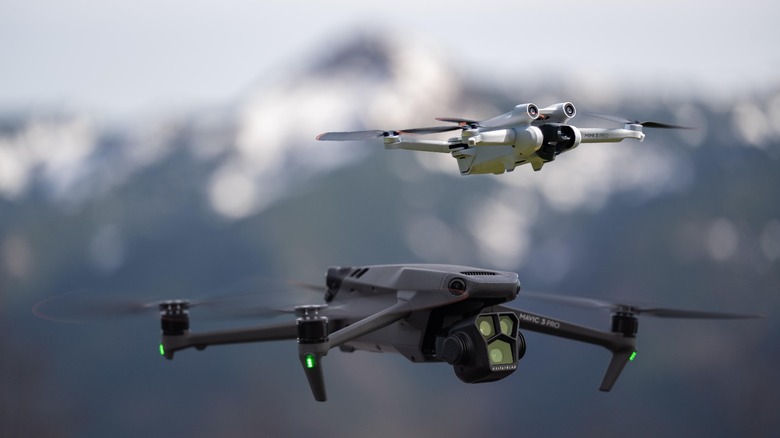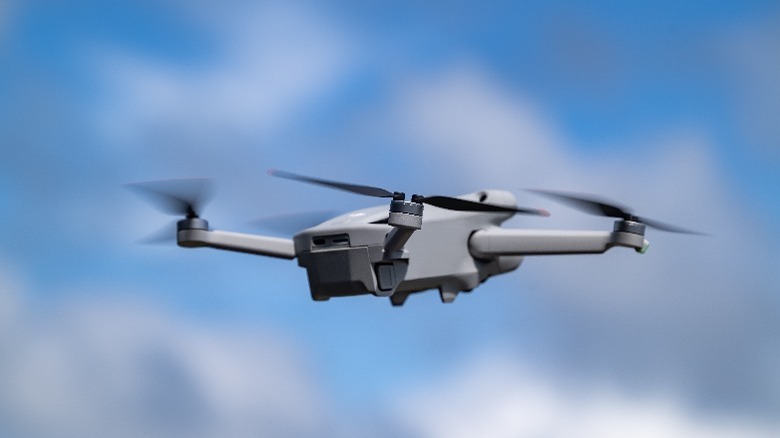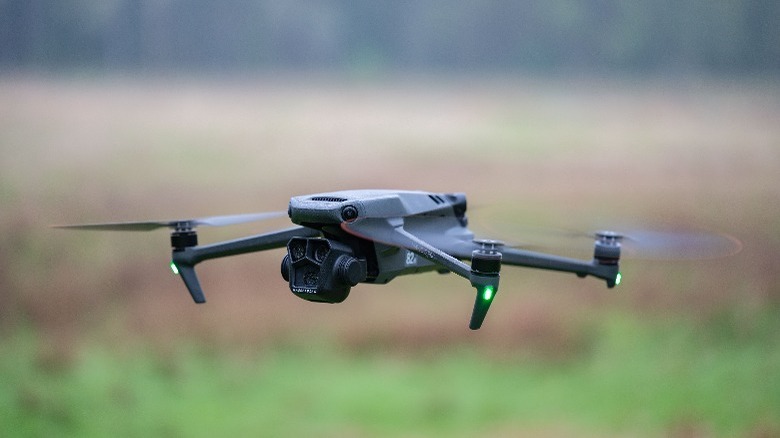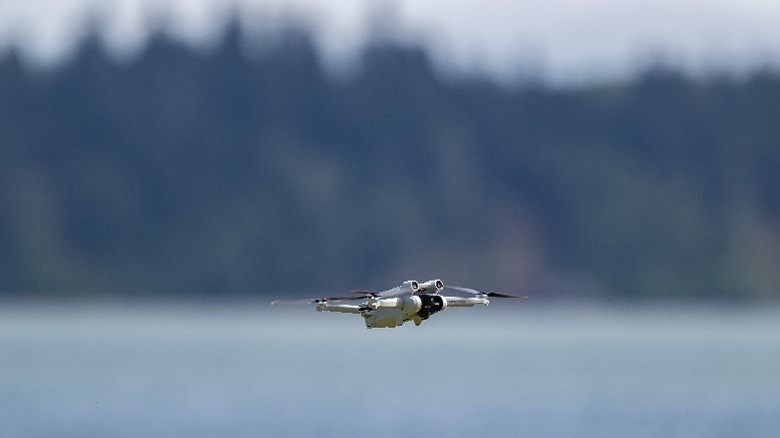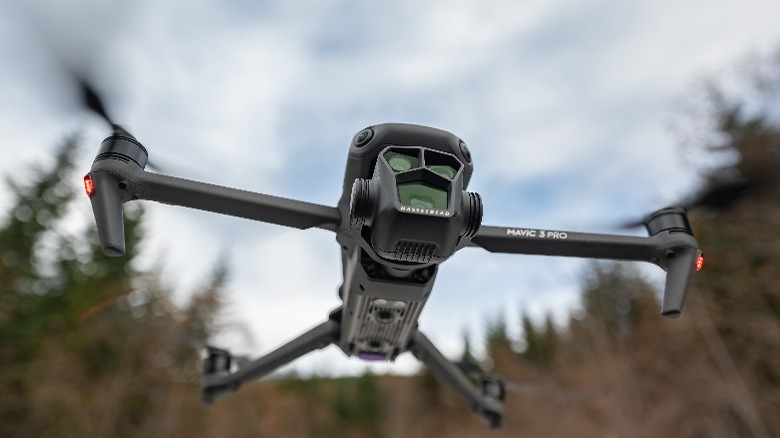DJI Mavic 3 Pro Vs. DJI Mini 3 Pro: Which One Is Worth Your Money?
The choice between the DJI Mavic 3 Pro and the DJI Mini 3 Pro isn't an easy one. These are two of the best, consumer-level drones in existence, and whichever one you pick will depend very largely on what you require in a drone. Despite the enormous difference in price, there is much these two unmanned aerial vehicles have in common, and neither will disappoint with its performance or aerial imaging capabilities.
However, when considering which one to buy, it's not as simple as picking the most expensive drone and calling it good. Even if money is no object, the Mini 3 Pro is frequently chosen by creators with deep pockets over bigger, and in many ways better, drones. You'll need to weigh not only the capabilities of each but also where you intend to fly and what subjects you intend to film. This article will endeavor to help you make an informed decision.
Size and weight
In terms of portability, the Mini 3 Pro is the obvious winner by an enormous margin. It weighs only 249 grams and measures just 145 mm by 90 mm by 62 mm folded and 171 mm by 245 mm by 62 mm unfolded. That's small and light enough to comfortably carry in a large coat pocket. The Mavic 3 Pro, by comparison, weighs in at 958 grams and measures 231.1 mm by 98 mm by 95.4 mm folded and 347.5 mm by 290.8mm by 107.7 mm unfolded. This makes the Mavic 3 Pro nearly four times heavier than the Mini 3 Pro, and almost twice its size.
With that said, the Mavic 3 Pro is hardly a lunker to haul around, and when folded it's really very compact. The reason the weight of these drones is so important to consider has to do with regulations. Lightweight drones are typically subject to far fewer regulations than heavier ones. In the US, a drone under 250 grams doesn't need to be registered, and similar advantages may be found in other countries around the world.
For this reason, many people, particularly those who do a lot of traveling, will find that the weight of the Mini 3 Pro will supersede all other factors. Even if regulations aren't a major factor where you live, or if you have all the necessary certifications, the portability factor of the Mini 3 Pro is a significant consideration.
Speed and transmission
While the Mavic 3 Pro is certainly faster than the Mini 3 Pro, the difference isn't as enormous as you might think. The Pro can travel up to 47 mph horizontally, descend at 6 meters per second, and ascend at 8 m/s, while the Mini has a maximum horizontal speed of just under 36 mph, a descent speed of 5 m/s, and it also ascends at up to 5 m/s. While the difference is significant, the Mini 3 Pro is no slouch, despite being slower than the Mavic 3 Pro. They're also very close when it comes to wind resistance, with the Mavic being able to withstand 12 m/s wind, and the Mini being resistant up to 10.7 m/s.
In terms of transmission, both drones offer a solid, long-distance video and RC connection. The Mini 3 Pro utilizes Occusync 3, while the Mavic 3 Pro has Occusync 3+. This means that the Mini can travel up to 12 km away from your position under ideal conditions, while the Mavic can travel up to 15 km. Of course, interference and obstructions drastically reduce this range, but within the relatively short range you'll typically be operating, they both offer solid, high-resolution transmission. One distinction here is that the Mavic 3 Pro can transmit a video stream up to 1080p 60fps, while the Mini 3 Pro only supports 1080p 30fps video streaming.
Image and video quality
Cameras are the area where the Mavic 3 Pro leaps ahead of the Mini 3 Pro by a truly gigantic margin. The Mavic 3 Pro features the best camera array of any drone in the skies, outside of ultra-expensive cinema drones like the DJI Inspire 3. With the Mavic 3 Pro, you get three separate cameras. The first is designed by Hasselblad and features a wide-angle 24mm equivalent lens powered by an enormous 20MP M4/3 sensor. The second has a smaller 1/1.3 inch 48MP sensor and a medium telephoto 70mm equivalent lens. The third is a super telephoto, which goes out to 166mm and has a ½ inch 12MP sensor. The Hasselblad camera produces particularly gorgeous images, which is on a level with professional mirrorless cameras and DSLRs.
The Mini 3 Pro camera is nowhere near as good, yet it's respectable for what it is and captures high-quality photos and videos. It's equipped with a 1/1.3 inch 48MP sensor behind a 24mm equivalent wide-angle lens. While that doesn't sound impressive next to the Mavic, the camera on the Mini is actually of above-average quality for a drone, particularly in drones of its diminutive size.
The Mavic 3 Pro can shoot up to 5.1k at 50 fps, or 4K at 120 fps, while the Mini can do 4K at up to 60fps and 1080p at up to 120fps. You also get access to more video formats with the Mavic3 Pro.
Battery life and maximum altitude
The Mavic 3 Pro is capable of flying for up to 43 minutes on a single charge, which allows for quite a bit of aerial filmmaking and photo shooting without needing to swap batteries. However, the Mini 3 Pro is no slouch either, being able to fly up to 34 minutes with the standard Intelligent Flight Battery. You can also get the larger Intelligent Flight Battery Plus for the Mini, which lasts up to 40 minutes, putting it within striking distance of the Mavic. However, that battery puts the weight of the Mini over 250 grams, thus putting it at risk of regulatory woes.
The Mavic 3 Pro can take off at elevations all the way up to 6000 meters, so that makes it capable of operating on all but the very tallest mountains. The Mini 3 Pro, on the other hand, is limited to 4000 meters at takeoff, a number which falls to 3000 meters with the Intelligent Flight Battery Plus. This means that the Mini 3 Pro may struggle in mountain regions, and isn't ideal to fly in the Andes or the Himalayas.
Features
You'll find that both drones are absolutely packed with intelligent features, but there are some differences to be discovered as well. Both can capture automated panoramas and HDR images and can shoot automated video clips for precise cinematic shots.
The Mavic 3 Pro has a more advanced sensor array, with APAS 5.0 obstacle avoidance, as opposed to APAS 4.0 in the Mini 3 Pro. This means that the Mavic is going to be able to avoid obstacles more reliably and smoothly than the Mini.
The biggest feature difference is when it comes to waypoints and automated flights. With the Mavic 3 Pro, you can create and save precise routes and movements for the drone to follow, which can be repeated in the future. It also features cruise control and safer return-to-home capability. The Mini 3 Pro can only do waypoints in hyperlapse mode, doesn't have cruise control, and its return-to-home features aren't as advanced. This advantage when it comes to RTH is due to the Mavic 3 Pro's more advanced obstacle avoidance capabilities, which reduce the chance of the drone crashing or becoming stuck when finding its way home through complex environments.
It's also important to note that the Mavic 3 Pro has a variable aperture in the wide-angle camera, which is helpful for controlling light levels and depth of field. However, the Mini 3 Pro has the unique capability of flipping its camera to shoot vertical photos and videos, which is extremely useful for sharing on social media.
Price and accessories
When it comes to sticker shock, the Mini 3 Pro is way less painful to your bank account than the Mavic 3 Pro. The Mini 3 Pro starts at just $759, while the Mavic 3 Pro will set you back $2199 for the most basic package. That makes the Mini 3 Pro nearly three times cheaper than the Mavic 3 Pro, though if you get the Mini 3 Pro with the highly recommended DJI RC controller and its built-in screen, it's a bit more expensive at $909. Otherwise, at the lower $759 price point you only get the DJI RC-N1 controller, which requires you to plug in a phone or tablet to fly.
The Mavic 3 Pro comes standard with the DJI RC remote at its base $2199 price point and has a more extensive range of upgrade options. If you want the high-end DJI RC Pro controller, it's available in a $3889 combo with the Mavic 3 Pro, in addition to a range of other accessories. The Mavic 3 Pro is also available in a Cine edition which includes an onboard 1TB SSD and the ability to record video in Apple ProRes, but that will set you back $4,799.
One interesting thing to note is that the Mini 3 Pro is available without a controller for a discount, which brings it down to $669. Since both the Mini and the Mavic use the same controllers, you could get both drones for $2868 with one controller to share between them.
DJI Mavic 3 Pro vs DJI Mini 3 Pro Final Verdict
In the end, neither the Mavic 3 Pro nor the Mini 3 Pro can be declared totally superior to the other. These are very different drones, each with strengths and weaknesses that fit for purpose within particular niches. A drone enthusiast might even consider owning both for use in different scenarios.
The Mavic 3 Pro is undoubtedly the more capable of the two. It's faster and has a camera array that's leagues beyond what the Mini 3 Pro is capable of. The Mavic 3 Pro is the ultimate system for aerial photography and videography, at least outside of ultra expensive super high end systems like the DJI Inspire 3.
However, the Mini 3 Pro has an equally enormous advantage when it comes to size and weight, allowing it to sidestep regulations which would make the Mavic 3 Pro difficult or impossible to use in some places. The diminutive weight and size of the Mini 3 Pro also makes it much easier to carry with you when space and weight are limited. Price is also an important consideration, as the base Mini 3 pro is less than a third of the cost of the base Mavic 3 Pro.
If image quality is paramount, and regulations permit, the Mavic 3 Pro is the clear choice, but if portability and regulatory compliance are the determining factors, then choose the Mini 3 Pro.
